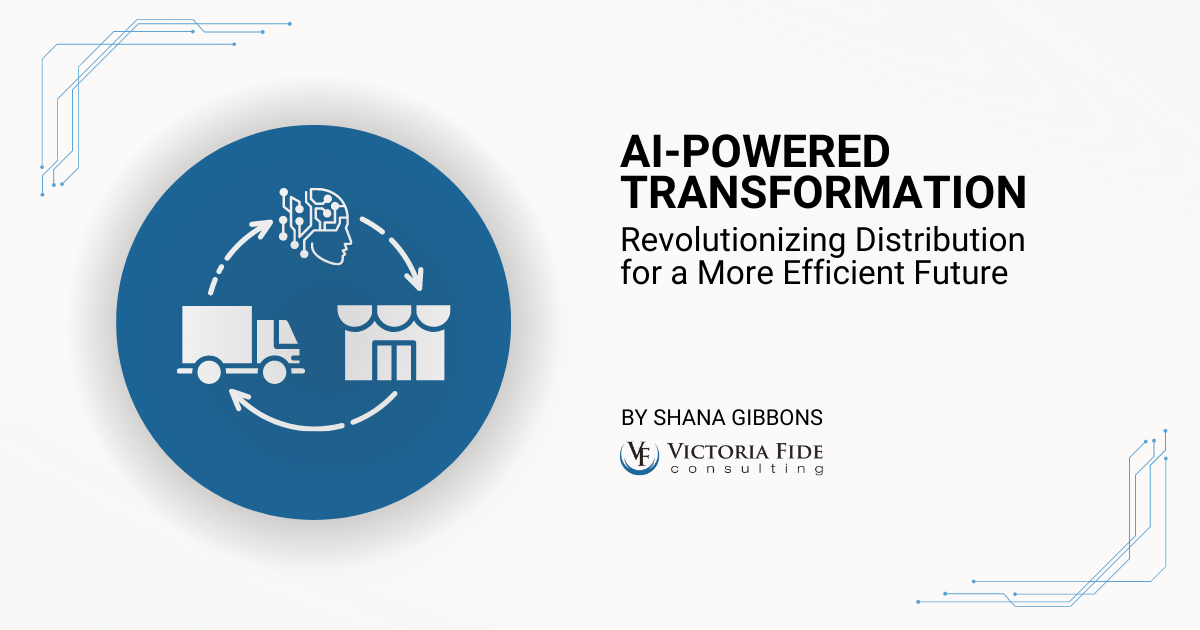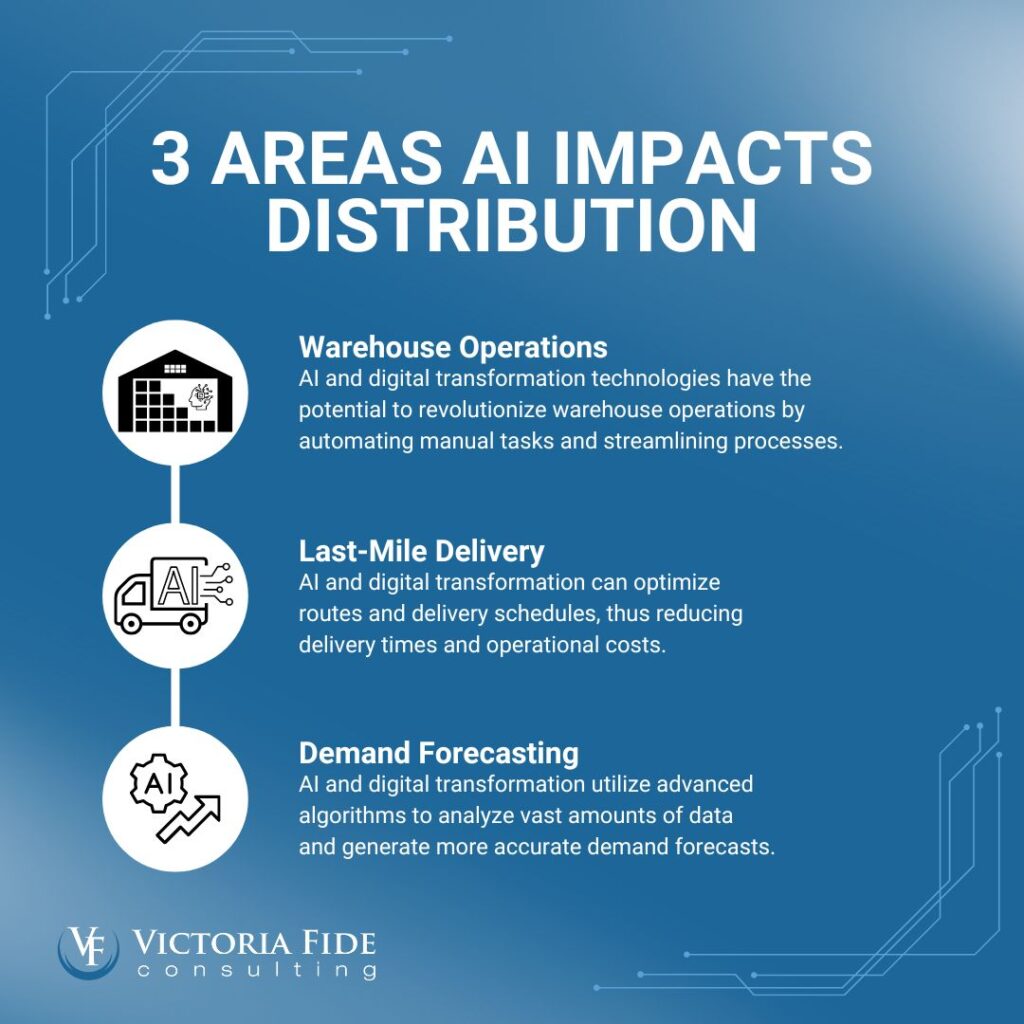
The distribution industry is the backbone of global commerce, ensuring the smooth flow of goods from manufacturers to end consumers. As the world continues to embrace digital transformation, the distribution sector is also undergoing a significant shift, with artificial intelligence (AI) playing an increasingly vital role in streamlining operations and enhancing efficiency. By leveraging AI and digital transformation technologies, distributors can optimize their processes, reduce costs, and improve customer satisfaction.
In this blog post, we will examine the positive impact of AI and digital transformation in the distribution industry, highlighting three compelling examples that showcase the transformative power of these technologies and their potential to redefine the future of distribution.
Revolutionizing Warehouse Operations with AI-Powered Automation
Warehouses are critical components of the distribution process, and efficient warehouse management is essential for timely order fulfillment and overall customer satisfaction. AI and digital transformation technologies have the potential to revolutionize warehouse operations by automating manual tasks and streamlining processes.
For instance, a leading e-commerce company has implemented AI-driven robotics to automate warehouse operations. The company utilizes a fleet of autonomous robots that work alongside human employees to pick, pack, and transport items. These robots are guided by AI algorithms that determine the most efficient routes and optimize the picking process, reducing the time it takes to fulfill an order.
Additionally, digital transformation has enabled the use of advanced Warehouse Management Systems (WMS) that integrate with AI-powered tools to improve inventory management, demand forecasting, and labor allocation. As a result, distributors can make data-driven decisions, optimize warehouse space utilization, and minimize stockouts and overstock situations.

Enhancing Last-Mile Delivery with AI-Driven Route Optimization
Last-mile delivery is one of the distribution process’s most challenging and cost-intensive aspects, accounting for a significant portion of the total logistics costs. AI and digital transformation can significantly improve last-mile delivery operations by optimizing routes and delivery schedules, thus reducing delivery times and operational costs.
A prominent logistics provider, for example, has implemented an AI-powered route optimization solution to streamline its last-mile delivery operations. The system utilizes machine learning algorithms to analyze historical delivery data, traffic patterns, and weather conditions to determine the most efficient delivery routes. As a result, the company has reduced delivery times by 20% and cut fuel consumption by 15%.
Moreover, AI-driven route optimization enables distributors to adapt dynamically to changing conditions, such as unexpected traffic congestion or sudden increases in order volume. This flexibility ensures that deliveries are completed in the most efficient manner possible, leading to higher customer satisfaction and reduced operational costs.
Improving Demand Forecasting and Inventory Management
Accurate demand forecasting is crucial for distributors, as it enables them to maintain optimal inventory levels and ensure the timely availability of products. However, traditional demand forecasting methods often rely on historical data and manual analysis, which can be time-consuming and subject to human error. AI and digital transformation offer a more sophisticated approach, utilizing advanced algorithms to analyze vast amounts of data and generate more accurate demand forecasts.
A global food distributor, for instance, has embraced AI-driven demand forecasting to optimize its inventory management. To predict future demand, the company uses machine learning algorithms to analyze data, including historical sales, seasonal trends, and market factors. This has enabled the distributor to reduce stockouts and overstock situations, increasing customer satisfaction and reducing inventory carrying costs.
Distributors can make more informed decisions about inventory levels and replenishment schedules by leveraging AI-powered demand forecasting, ultimately improving their operational efficiency and bottom line.
The future is coming quickly, and artificial intelligence will undoubtedly be a part of it. As this technology develops, the world will see new startups, numerous business applications, and consumer uses, displacing specific jobs and creating entirely new ones.
Ultimately, AI and digital transformation can provide greater visibility into the supply chain, enabling manufacturers and distributors to identify and solve problems quickly. Over time, they increase sales, reduce operational costs, improve customer service, and gain a competitive edge.
Additional Resources
- Digital Transformation in Manufacturing: What Are The Benefits? | Resolve (resolvepay.com)
- TTC-EC-CEA-AI-Report-12052022-1.pdf (whitehouse.gov)
- Driving-impact-at-scale-from-automation-and-AI.ashx (mckinsey.com)
- Mapping the Role and Impact of Artificial Intelligence and Machine Learning Applications in Supply Chain Digital Transformation: A Bibliometric Analysis | SpringerLink
- Frontiers | Achieving Operational Excellence Through Artificial Intelligence: Driving Forces and Barriers (frontiersin.org)
- Revolutionizing Manufacturing with Digital Transformation – Rejolut
- These eight technologies will have the greatest impact on business and society (knowit.eu)
About the Author
Shana Gibbons is the Warehousing and Supply Chain Business Process Consultant. She has over 16 years of experience working in the Supply Chain and Warehousing space, and she is deeply passionate about building relationships with her clients and teams in order to help them navigate through their Warehouse and Supply Chain ups and downs.
